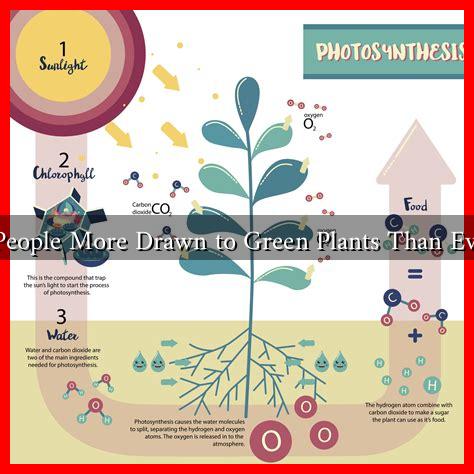-
Table of Contents
Why Are People More Drawn to Green Plants Than Ever Before?
In recent years, there has been a noticeable surge in the popularity of green plants among individuals of all ages. From urban apartments to corporate offices, greenery has become a staple in interior design and personal spaces. But what is driving this trend? This article explores the multifaceted reasons behind the growing attraction to green plants, supported by research, statistics, and real-world examples.
The Psychological Benefits of Greenery
One of the primary reasons people are increasingly drawn to green plants is the psychological benefits they offer. Numerous studies have shown that interacting with nature can significantly improve mental health and well-being. Here are some key points:
- Stress Reduction: A study published in the Journal of Physiological Anthropology found that participants who engaged with plants experienced lower levels of stress and anxiety.
- Enhanced Mood: Greenery has been linked to improved mood and emotional well-being. A 2015 study indicated that individuals with indoor plants reported feeling happier and more relaxed.
- Increased Productivity: Research from the University of Exeter found that employees in environments with plants were 15% more productive than those in sterile settings.
The Rise of Urban Gardening
As urbanization continues to rise, many people are seeking ways to reconnect with nature. Urban gardening has become a popular solution, allowing individuals to cultivate their own green spaces, even in limited areas. This trend is fueled by several factors:
- Food Security: With the increasing awareness of food sources, many urban dwellers are growing their own vegetables and herbs, ensuring fresh produce at their fingertips.
- Environmental Awareness: The push for sustainability has led many to adopt gardening practices that reduce their carbon footprint and promote biodiversity.
- Community Building: Community gardens have emerged as social hubs, fostering connections among neighbors and promoting a sense of belonging.
The Aesthetic Appeal of Indoor Plants
Beyond their psychological and environmental benefits, green plants also serve an aesthetic purpose. The rise of social media platforms like Instagram and Pinterest has amplified the visibility of indoor plants, showcasing their beauty and versatility in home decor. Here are some reasons why people are drawn to the aesthetic appeal of plants:
- Versatile Decor: Plants can complement various interior design styles, from minimalist to bohemian, making them a popular choice for home decor.
- Color and Texture: Greenery adds vibrant color and texture to spaces, enhancing the overall ambiance and making environments feel more inviting.
- Personalization: The variety of plant species allows individuals to express their personality and style through their choices.
Health Benefits of Indoor Plants
In addition to their aesthetic and psychological advantages, indoor plants also contribute to physical health. Research has shown that having plants indoors can improve air quality and overall health:
- Air Purification: According to a study by NASA, certain plants can effectively remove toxins from the air, improving indoor air quality.
- Humidity Regulation: Plants release moisture into the air, which can help maintain humidity levels and reduce respiratory issues.
- Enhanced Focus: Improved air quality and reduced stress levels can lead to better concentration and cognitive function.
Conclusion
The growing attraction to green plants can be attributed to a combination of psychological benefits, urban gardening trends, aesthetic appeal, and health advantages. As people increasingly seek ways to enhance their well-being and reconnect with nature, the presence of greenery in our lives is likely to continue rising. Whether through indoor plants, community gardens, or urban farming, the love for green plants reflects a broader desire for sustainability, health, and happiness in an increasingly urbanized world.
In summary, the trend towards green plants is not just a passing fad; it represents a significant shift in how we view our relationship with nature and our environments. As we continue to embrace this green revolution, the benefits of plants will undoubtedly enrich our lives in countless ways.

